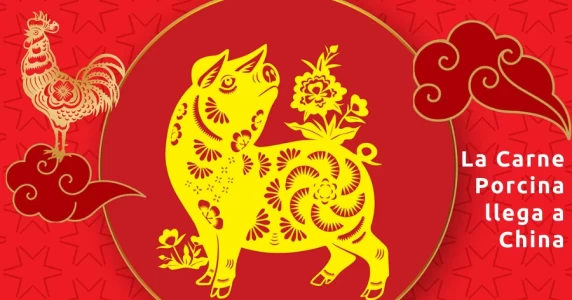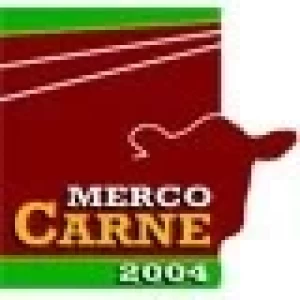DARK CUTTING BEEF

In general, meat quality-related problems have increased in Chile in the last years for two reasons: the production increase that leads to problems in the handling of animals and the quality control improvement through greater technology in slaughterhouses and balers. The increasing detection of the meat anomaly known as “dark cutting beef” results from both situations. This problem occurs in 3% of the carcasses in almost every country. Regarding its incidence in Chile, it usually varies from 4% to 10%, but in some critical times or in certain animal groups it can go up to 25 % (and even 40%) depending on factors such as breed, gender, age and, above all, the handling conditions and stress before slaughter. In Chilean plants, this is a serious problem that results in significant economic losses due to the limited use of the meat presenting this anomaly.What is dark cutting beef?This is an anomaly suffered by meat, which is characterized by a dark red color and high pH levels in some muscles of the carcass, mainly the sirloins (there the name “black sirloins”).A normal level of pH in meat 24 hours after slaughter will be of 5.3 to 5.7. Regarding the pH color considered as inadequate, the quality of the meat is impaired when the final pH is of 5.8 or higher, being this value the one that most slaughterhouses are considering as a problem (unacceptable).From a technological point of view, the pH of meat is a main factor in the processing and packing. The pH impacts on its organoleptic characteristics and suitability to be made into processed products since it has a direct or indirect influence on color, tenderness, taste, water fixing and preservation capacities.The color of the meat is a very important aspect for consumers when choosing the meat; so they do not accept to buy very dark meat as they think it is from an old animal or that it has been improperly preserved. The retailer rejects dark cutting carcasses for the same reasons. So, it impacts on the carcass appearance, specially on some cuttings, thus decreasing their acceptability although in fact it does not alter its nutritional value and being the affected meat even more tender.Why does it happen?Dark cutting beef is a direct consequence of a reduced amount of muscle glycogen at the moment of slaughter, caused by the animal response to several stress-generating factors to which it is exposed, since it uses up their glycogen reserves to produce energy to defend itself from an adverse environment. A living and healthy animal’s musculature has a pH of about 7; after slaughter there is a natural pH decrease due to postmortem glycolysis: in this anaerobic process, lactic acid builds up from glycogen, acidifying the environment, i.e. decreasing the pH. There is a little amount of muscle glycogen available in animals that have undergone long or chronic stress before slaughter and in those that have not been fed for a long time. If there is little glycogen in the muscles, there is little substrate to be converted to lactic acid and, as a result, the normal pH decrease is not possible and it remains high. Therefore, any stressing situation before slaughter, specially the chronic ones, can result in the dark cutting anomaly.It is difficult to control this problem because all the actions carried out before slaughter, such as drove, transportation, wait in lots being unfed and desensitization, are generally stressful in nature: the animal is pulled out from its natural environment (farm) usually through inadequate means, and taken to an unknown place, which is generally adverse, sometimes with other animals from different places and without food.Importance of transportationIn a recently ended study in which 4 transportation times (3, 6,12 and 24 hr) were compared, it was concluded that the longer the transportation was, the greater the alteration of stress-indicating blood variables was. Not only the live weight and quality of the carcass in terms of contusions but also other quality-related features such as meat pH and color were negatively affected. Those alterations were significantly higher for the 24-hour transportation compared to the ones for the other shorter times.Transportation of over 24 hours (36 hr), either with or without rest, is definitely detrimental to the animal welfare and meat quality in terms of contusions as well as of carcass appearance with dark cuttings and abnormally high pH. These results confirm what has already been pointed out in the regulation about the need of rest after a 24-hour trip.Long trips (of over 12 hours) should be avoided, and the maximum admissible density should not be reached in long trips so as to prevent animals from suffering muscle damage and, as a consequence, affecting negatively the quality of the meat. Importance of fasting timeIn recent studies on different fasting times carried out on cows, it was found out that after a 12-hour wait there is a tendency for the obtained carcasses to lose weight, affecting besides the quality of the meat, increasing the incidence of high pH values (of 5.8 or higher) and the incidence of dark cutting carcasses (specially after a 12-and-24-hour wait compared to a 3-or-6-hour wait). This effect was more evident after a long transportation (16 hr.) than a short one (3 hr.).Genetic factorsThere are some breeds which are more likely to suffer from dark cutting; animals with excitable temperaments are more sensitive. For example, little bulls in Europe suffer more than emasculated males and females from dark cutting, being it higher in some kinds of cattle than in others.Importance of FeedingIt is important for animals to be properly fed in the slaughterhouse so that their energy reserves do not decrease during the weeks prior to slaughter (do not reduce their amount of food). It is because the less food you give them, the less glycogen reserves in muscle they will have and any stress will be even worse. It has been observed, for example, that steers slaughtered in the winter, when they are given a supplement of grains in the fattening process, have higher levels of glycogen before slaughter than those fed only in the prairies in spring.How can dark cutting beef be prevented?The difficulty in the prevention of dark cutting beef lies in the fact that there are many factors involved, and therefore all of them must be controlled.Both the animal welfare and the quality of the meat, specially in terms of dark cutting beef incidence, can be improved by handling animals adequately, reducing the market times at fairs as well as the trip distances to slaughterhouses, properly planning the slaughtering precedence at slaughterhouses so as to avoid too long waits.Preventing dark cutting beef requires, therefore, a joint action by all the parts in the meat chain: producers, carriers and slaughterhouses.*Veterinarian. Professor at the Meat Science and Technology Institute, Chile Austral University. This article is an edition of the lecture given by Dr. Gallo at the Animal Welfare Technical Updating Conference, December 2003, Montevideo, Uruguay.





